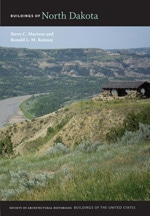
Faint depressions mark the archaeological features of this Hidatsa earthlodge village that was occupied by one of three Hidatsa groups (the Awaxawi) from about 1700 until the 1781–1782 smallpox epidemic killed about half of their people. This was the first in a series of epidemics brought to the Mandan and Hidatsa people by Europeans. After 1782 the Hidatsa joined the Mandan at the Knife River Indian Villages (ME2.1) site beside the Missouri River to the north. The Molander village was protected from attack by a dry moat and wooden fortifications with bastions. A fieldstone kiosk marking the site was built by CCC crews in the 1930s.

